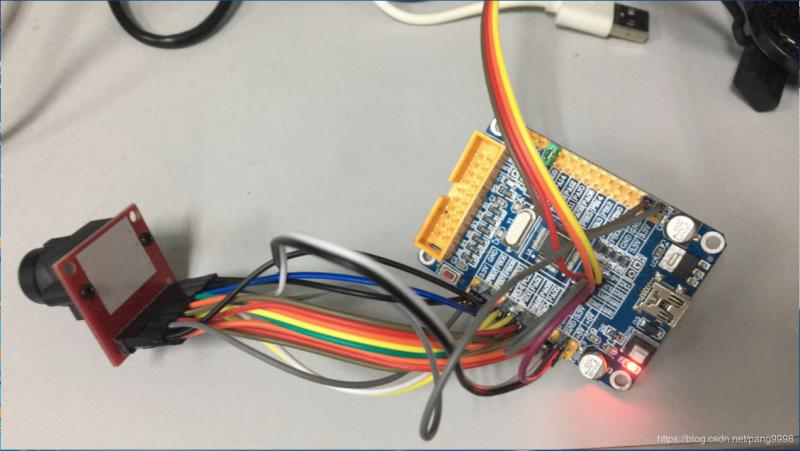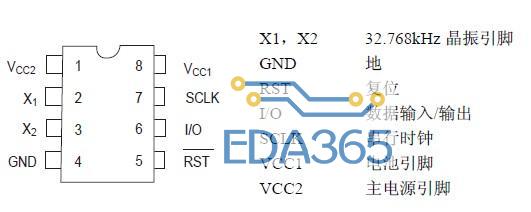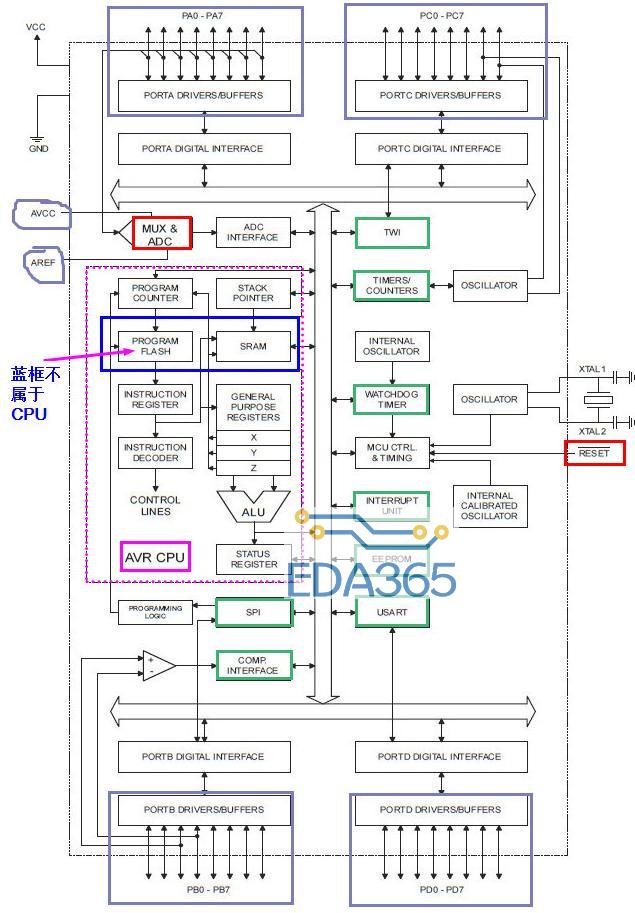一,准备MDK-ARM+JLINK+STM32软件包
1,在http://www.mcu123.com/news/Soft/embsof/arm/200908/505.html
下载RealView MDK-ARM 3.80a(MDK-ARM V3.80a,MDK3.80a)版本
mdk380a_mcu123.rar
http://esoft.mcu123.com/MCU123_temp_0080309@/arm/mdk380a_mcu123.rar
(注册机自行查找,安装过程略)
2,在http://www.segger.com/cms/jlink-software.html
下载Software and documentation pack V4.08l软件
Setup_JLinkARM_V408l.zip
http://www.segger.com/cms/admin/uploads/userfiles/file/J-Link/Setup_JLinkARM_V408l.zip
(JLINK自行购买,安装过程略)
3,在http://www.st.com/mcu/familiesdocs-110.html
下载ARM-based 32-bit MCU STM32F10xxx standard peripheral library
stm32f10x_stdperiph_lib.zip
http://www.st.com/stonline/products/support/micro/files/stm32f10x_stdperiph_lib.zip
二,建立STM32工程
1,解压stm32f10x_stdperiph_lib.zip软件包,把其中的“Libraries”和“Project”文件夹复制到“D:worksEK-STM3210E-MDK”,
在“D:worksEK-STM3210E-MDK”下建立“Drivers”、“Include”和“Source”空文件夹,在“D:workslccd-1.0.0Project”
下建立“Stm32f103”空文件夹,把“ProjectTemplate”下的C文件复制到“Source”和H文件复制到“Include”;
2,在Keil uVision3菜单中“Project”->“New uVision Project”打开“Create New Project”窗口,选择项目工程存储路径
“D:worksEK-STM3210E-MDKProjectStm32f103”填写项目文件名“stm32.uv2",选择“保存”后自动打开“Select Device for
Target "Target 1"”窗口,在左面“CPU”页面下的“Data base”点开“STMicroelectronics”前面的“+”选择上“STM32F103ZD”
点击“OK”再确定“是”;
3,在Keil uVision3菜单中“Project”->“New Project Workspace”打开“Create New Multi Project Workspace”窗口,选择项目
工作区存储路径“D:worksEK-STM3210E-MDKProjectStm32f103”填写工作区文件名“stm32.mpw",点击“保存”打开
“Create New Multi-Project Workspace”窗口,点击插入项目,然后选择到刚才建立的“stm32.uv2"再点“OK”“确定”
即可建立一个新的 Workspace;
4,在Keil uVision3菜单中“Project”->“Manage”选择“Project "stm32" Components”打开“Components Environment and Books”窗口,
把“Target 1”改为“EK-STM3210E”把“Source Group 1”以为“BOOT”点击“OK”;并在“Groups”下建立“SRC”,“DRV”,“SRC”,
“INC”,“SDRV”等 目录;
5,在Keil uVision3的左面“Workspace”窗口下面的“BOOT”上右击鼠标,选择“Add Files to Group "BOOT"”选择上文件
“D:worksEK-STM3210E-MDKLibrariesCMSISCoreCM3”文件夹下的“core_cm3.c”和“system_stm32f10x.c”文件,和
D:worksEK-STM3210E-MDKLibrariesCMSISCoreCM3startuparm文件夹下的“startup_stm32f10x_hd.s”后点击“CLOSE”退出;
6,在Keil uVision3的左面“Workspace”窗口下面的“SDRV”上右击鼠标,选择“Add Files to Group "SDRV"”选择上文件
“D:worksEK-STM3210E-MDKLibrariesSTM32F10x_StdPeriph_Driversrc”文件夹下的所有C文件后点击“CLOSE”退出;
7,在Keil uVision3的左面“Workspace”窗口下面的“SRC”上右击鼠标,选择“Add Files to Group "SRC"”选择上文件
“D:worksEK-STM3210E-MDKSource”文件夹下的“main.c”和“stm32f10x_it.c”文件后点击“CLOSE”退出;
8,在Keil uVision3的左面“Workspace”窗口下面的“DRV”上右击鼠标,选择“Add Files to Group "DRV"”选择上文件
“D:worksEK-STM3210E-MDKSource”文件夹下的“serial.c”文件后点击“CLOSE”退出;
三,配置STM32工程
在Keil uVision3的左面“Workspace”窗口下面的“EK-STM3210E”右击鼠标,选择“Options for Target "EK-STM3210E"”窗口;
1,在页面“Device”中选择上“STMicroelectronics”下面的STM32F103ZD”,
在页面“TarGet”中选择上“USE microLIB”;
2,在页面“Output”中选择上“Select Folder for Objects...”,在文件夹选择框中指定到路径:
D:worksEK-STM3210E-MDKProjectStm32f103obj 后点击“OK”;并勾选上Create HEX File,
产生“Debug information”浏览“Browse information”;
3,在页面“Listing”中选择上“Select Folder for Listing...”,在文件夹选择框中指定到路径:
D:worksEK-STM3210E-MDKProjectStm32f103lst 后点击“OK”;并勾选上C Compiler Listing
和 C Preprocessor Listing (看看自己是否需要);
4,在页面“C/C++”中的“Include Paths ”,中添加:
....LibrariesSTM32F10x_StdPeriph_Driverinc
....LibrariesCMSISCoreCM3
....Include
在页面“C/C++”中的“Preprocessor Symbols”,中添加:
USE_STDPERIPH_DRIVER, USE_FULL_ASSERT, STM32F10X_HD,USE_STM3210C_EVAL
5,在页面“ASM”中的“Include Paths ”,中添加:
....LibrariesSTM32F10x_StdPeriph_Driverinc
....LibrariesCMSISCoreCM3
....Include
在页面“ASM”中的“Preprocessor Symbols”,中添加:
USE_STDPERIPH_DRIVER, USE_FULL_ASSERT, STM32F10X_HD,USE_STM3210C_EVAL6,在页面“Debug”中选择右边的硬件仿真功能的“Cortex-M3 J-LINK”,并点开右面的“Settings”配置页面,选择SW接口并把速度改成2M;
在“Flash Download”的编程算法选择上“STM32F10x High-density Flash”;
7,在页面“Utlites”中硬件FLASH编程工具“Cortex-M3 J-LINK”,并点开右面的“Settings”配置页面,选择SW接口并把速度改成2M;
在“Flash Download”的编程算法选择上“STM32F10x High-density Flash”;
四,修改STM32工程
(待续)
[page]
附件:
1,serial.c 文件
/* Includes ------------------------------------------------------------------*/
#include "stm32f10x.h"
#include "stm32f10x_conf.h"
#include
/* Private typedef -----------------------------------------------------------*/
/* Private define ------------------------------------------------------------*/
/* Private macro -------------------------------------------------------------*/
/* Private variables ---------------------------------------------------------*/
USART_InitTypeDef USART_InitStructure;
GPIO_InitTypeDef GPIO_InitStructure;
/* Private function prototypes -----------------------------------------------*/
/* Private functions ---------------------------------------------------------*/
void UART_Configuration(void)
{
/* Enable USART1 clocks */
RCC_APB2PeriphClockCmd(RCC_APB2Periph_GPIOA | RCC_APB2Periph_USART1, ENABLE);
/* Configure USART1_Tx as alternate function push-pull */
GPIO_InitStructure.GPIO_Pin = GPIO_Pin_9;
GPIO_InitStructure.GPIO_Speed = GPIO_Speed_50MHz;
GPIO_InitStructure.GPIO_Mode = GPIO_Mode_AF_PP;
GPIO_Init(GPIOA, &GPIO_InitStructure);
/* Configure USART1_Rx as input floating */
GPIO_InitStructure.GPIO_Pin = GPIO_Pin_10;
GPIO_InitStructure.GPIO_Mode = GPIO_Mode_IN_FLOATING;
GPIO_Init(GPIOA, &GPIO_InitStructure);
/* USARTx configured as follow:
- BaudRate = 115200 baud
- Word Length = 8 Bits
- One Stop Bit
- No parity
- Hardware flow control disabled (RTS and CTS signals)
- Receive and transmit enabled
*/
USART_InitStructure.USART_BaudRate = 115200;
USART_InitStructure.USART_WordLength = USART_WordLength_8b;
USART_InitStructure.USART_StopBits = USART_StopBits_1;
USART_InitStructure.USART_Parity = USART_Parity_No;
USART_InitStructure.USART_HardwareFlowControl = USART_HardwareFlowControl_None;
USART_InitStructure.USART_Mode = USART_Mode_Rx | USART_Mode_Tx;
// STM_EVAL_COMInit(COM1, &USART_InitStructure);
/* Configure the USARTx */
USART_Init(USART1, &USART_InitStructure);
/* Enable the USARTx */
USART_Cmd(USART1, ENABLE);
}
/**
* @brief Retargets the C library printf function to the USART.
* @param None
* @retval None
*/
int fputc(int ch, FILE *f)
{
/* Place your implementation of fputc here */
/* e.g. write a character to the USART */
USART_SendData(USART1, (uint8_t) ch);
/* Loop until the end of transmission */
while(USART_GetFlagStatus(USART1, USART_FLAG_TXE) == RESET)
{}
return ch;
}
#ifdef USE_FULL_ASSERT
/**
* @brief Reports the name of the source file and the source line number
* where the assert_param error has occurred.
* @param file: pointer to the source file name
* @param line: assert_param error line source number
* @retval None
*/
void assert_failed(uint8_t* file, uint32_t line)
{
/* User can add his own implementation to report the file name and line number,
ex: printf("Wrong parameters value: file %s on line %d
", file, line) */
printf("Wrong parameters value: file %s on line %d
", file, line);
/* Infinite loop */
while (1)
{
}
}
#endif
/******************* (C) COPYRIGHT 2009 STMicroelectronics *****END OF FILE****/
2,main.c文件
/* Includes ------------------------------------------------------------------*/
#include "stm32f10x.h"
#include "stm32f10x_conf.h"
#include
/* Private typedef -----------------------------------------------------------*/
/* Private define ------------------------------------------------------------*/
/* Private macro -------------------------------------------------------------*/
/* Private variables ---------------------------------------------------------*/
/* Private function prototypes -----------------------------------------------*/
/* Private functions ---------------------------------------------------------*/
extern void UART_Configuration(void);
/**
* @brief Main program.
* @param None
* @retval None
*/
int main(void)
{
/* Setup STM32 system (clock, PLL and Flash configuration) */
SystemInit();
UART_Configuration();
/* Output a message on Hyperterminal using printf function */
printf("
");
printf("*** STM32-MDK V1.0 Build by yuanxihua@21cn.com on ("__DATE__ " - " __TIME__ ")
");
printf("*** STM32-MDK V1.0 Rebooting ...
");
/* Add your application code here
*/
/* Infinite loop */
while (1)
{
}
}
/******************* (C) COPYRIGHT 2009 STMicroelectronics *****END OF FILE****/
『本文转载自网络,版权归原作者所有,如有侵权请联系删除』
 热门文章
更多
热门文章
更多









